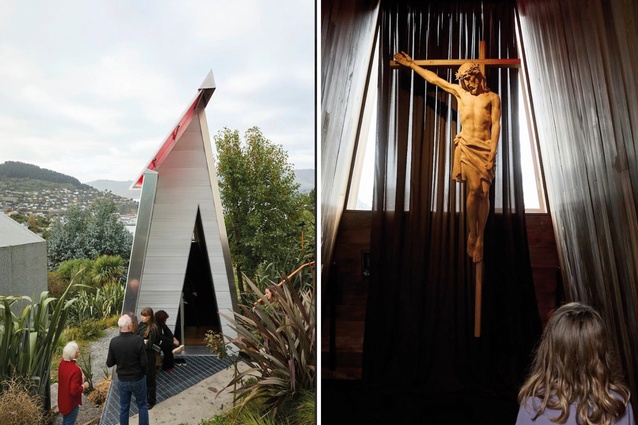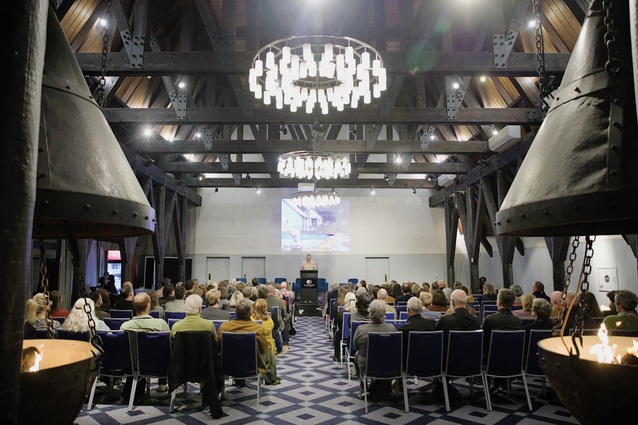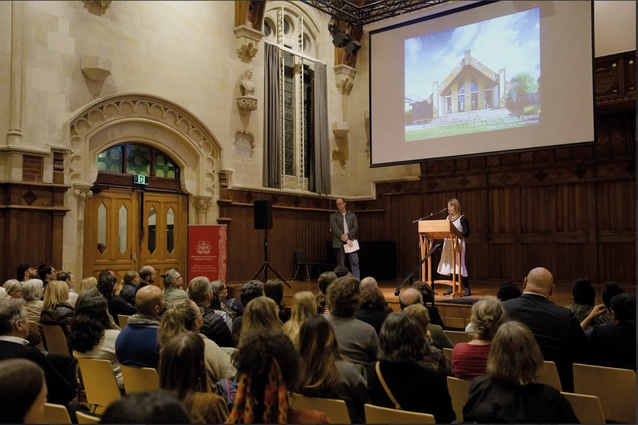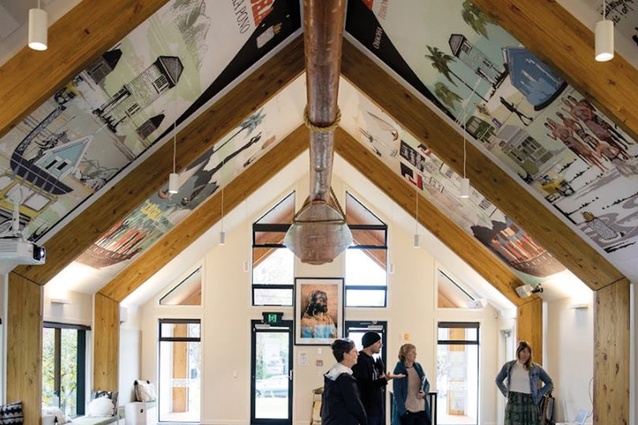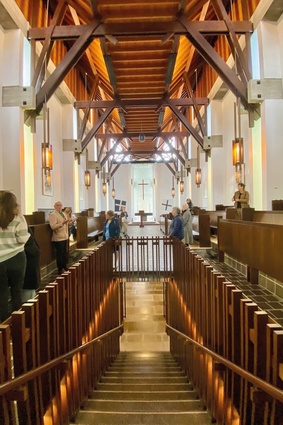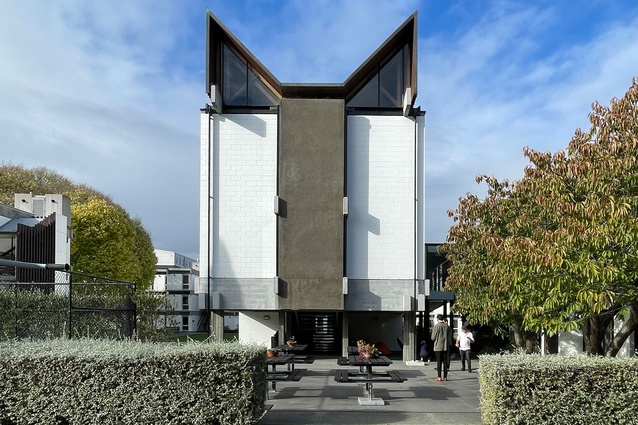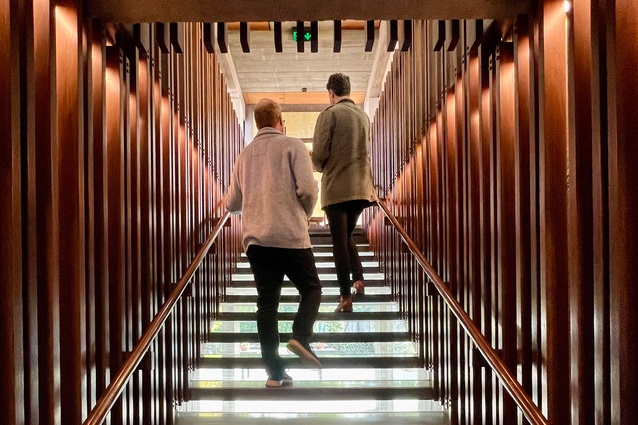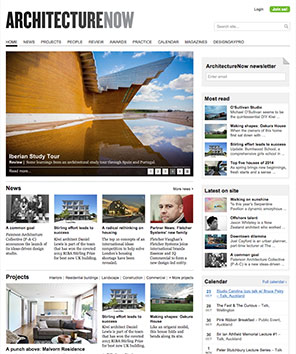Open Christchurch: Opening eyes, minds and hearts
Dorita Hannah attended Te Pūtahi’s annual Open Christchurch event and found a blueprint for sharing Aotearoa’s unfolding architectural heritage.
Opening a city’s architecture to the general public is both an act of generosity and a demonstration of urban porosity, which is fast becoming historical practice. Recent generations take the proliferation of security barriers, regulatory signage and surveillance for granted, while many of us remember churches, urban yards and campuses being open 24/7, including the ability to move through public institutions without scrutiny. This was predicated on self-organising citizens, mindful of spatial protocols and responsible for their own embodied navigation of the city and its sites of communal gathering.
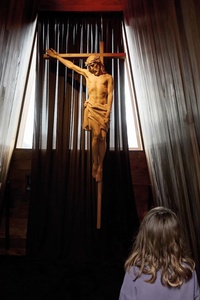
It was, therefore, heartening to attend the fifth iteration of Open Christchurch (2–4 May) where 51 public sites opened their doors, gates and stories to an ever-increasing audience. This demonstrated the public’s appetitite for contemporary and heritage architecture while enabling a general self-navigation of human flow, aided by the supportive presence of volunteers, making an event like this possible and pleasurable. And there’s great enjoyment in being guided through architecture by its authors, experts and guardians: this year ranging from Buddhist nuns caretaking Warren and Mahoney’s Fo Guang Shan Temple (2006); urban innovators, such as Three Sixty Architecture forming a creative community in The Yard (2018); cultural kaitiaki exemplified in Royal Associates Architects’ intergenerational development of Korako Whānau Papakāinga (2023) on ancestral land; and exuberant spatial visionary, Michael O’Sullivan, warmly receiving guests at Bull O’Sullivan’s Lyttelton Studio Retreat 2015–2025, with its tiny Chapel of St Thérèse of Lisieux, which had only just been completed. The latter asymmetric structure — a steeply rising apex fabricated from aluminium, timber and polycarbonate sheeting — houses an exquisite whakairo crucifix. Clinging to the steep site, this votive construction is the latest in a series of idiosyncratic hybrid spaces — evoking the Athfields’ sprawling hillside complex in Wellington’s Khandallah — and is the architects’ “gift of thanks” to Christchurch’s public for their post-quake embrace of the practice.
As a gift in itself, Open Christchurch is testament to the city and its inhabitants who have experienced trauma in the significant events of the 2010–2011 earthquakes and 2019 mosque shootings. The city has been further challenged by the Covid pandemic and the disruptive process of its phoenix architecture, charged with rebuilding infrastructure and community alongside the city’s identity and resilience. As buildings slowly fill empty sites, we are asked to imagine future laneways and interstitial courtyards planned to stitch together an emerging fabric. New developments are encouraged to recognise pre-colonial history and cultural narratives that were previously repressed in this most anglicised of New Zealand cities.
The truly innovative feature of Open Christchurch is the existence and development of its hosting organisation, Te Pūtahi Centre for Architecture & City Making, led by co-founder Dr Jessica Halliday and her small-but-perfectly-formed team, which increases in number around the time of the event to include necessary specialists and those vital volunteers. Inspired by Open House London, Halliday took almost 20 years to get the Christchurch version under way, attentively curated to acknowledge Te Tiriti while considering locals, visitors and the particular cultural context of Ōtautahi in Aotearoa. Billed as an “annual one-weekend-only festival of exceptional architecture” — and advised by a Building Council of specialists supported by a dynamic board of young creatives — the overall design celebration includes walks, talks, tours and, this year, two special evening events: one focusing on the city’s modernist legacy; and another more broadly on the role of meeting halls in New Zealand society.
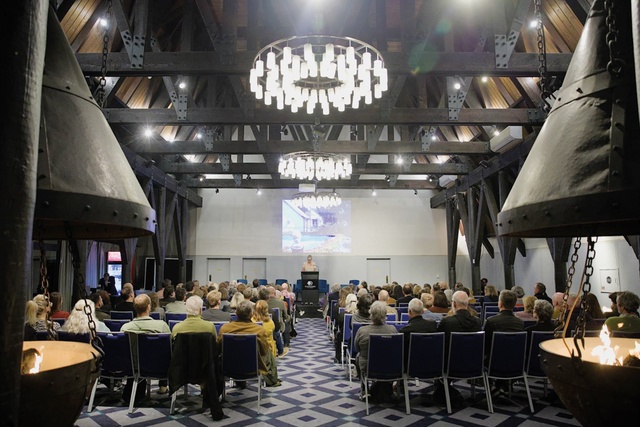
Children of the Christchurch Modernists was held in the curiously medieval-modern hall of Peter Beavan’s Chateau on the Park (1975), now DoubleTree by Hilton, where the mature offspring of departed architects presented their fathers’ legacies, each selecting a distinctive building for discussion. However, it was the opening event, Beyond Walls: The Power of Wharenui and Great Halls that set the tone for this particular festival, which also celebrated Benjamin Mountfort (1825–1898), the city’s pre-eminent 19th-century architect born two centuries ago and famed for his Gothic Revival buildings. Convened in the Great Hall of Mountfort’s Canterbury College (1882), which was restored as Te Matatiki Toi Ora The Arts Centre by Warren and Mahoney (2017), the event assembled an impressive line-up of contemporary historians, architects and cultural specialists, presenting beneath a soaring barrel-vaulted ceiling. What became clear was not only a continuing need for such community spaces, but the criticality of the wharenui: an ancestral embodiment with its embedded stories and lower, flatter gable roof, referred to by Amiria Kiddle (Ngāti Porou, Ngāpuhi) as a more intimate womb-like space she likened to a whare tangata. Nic Low (Ngāi Tahu) sees such a place as one for “imagining other worlds”. This sense of intimacy and dialogue is encapsulated in Field Studio’s modest design of Te Iho o te Ora (2022) for Te Ora Hou Ōtautahi, a kaupapa Māori youth organisation with rangatahi and Ngāi Tahu artists contributing to narratives in the architecture. Set amidst ingeniously arranged portacabins, the whare’s identity as a community hub is enhanced by graphic ceiling panels, the massive tōtara hoe hung between timber portals and a northern wall of window seats.
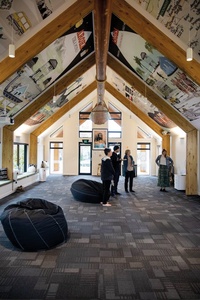
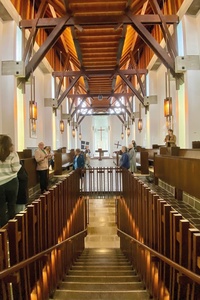
The festival’s programme revealed a wealth of local venues for assembling communities, including: Warren and Mahoney’s meticulously renovated Christchurch Town Hall (1972, 2019) with its Douglas Lilburn Auditorium, internationally recognised as a masterpiece of concert hall architecture; Wilkie + Bruce’s The Piano (2016), dedicated to serving musicians and audiences with acoustically refined practice rooms and performance spaces; and The Court Theatre (2025), a notable collaboration between Athfield Architects and UK-based Haworth Tompkins Studio, opening to great fanfare during the weekend. With an impressive array of sacred spaces, including many by Mountfort, it was a special treat gaining access to Warren and Mahoney’s Chapel of the Upper Room in College House (1967), faithfully restored by Wilkie + Bruce (2022). Hosting fewer religious services, this extraordinary modernisation of the Oxbridge tradition offers a place of sanctuary for students privileged to inhabit its hallowed hall of residence.
By opening those doors, gates and stories, Te Pūtahi aims “to open people’s eyes, minds and hearts” towards a flourishing city “that amplifies their sense of joy, meaning and belonging”. This exemplifies the Māori principle of manaakitanga, extending beyond welcoming guests and exhibiting generosity to uphold community responsibility and reciprocity. To build for its future, Aotearoa must recognise its past and acknowledge its present, especially regarding the creative role played by architecture. Through Te Pūtahi, Open Christchurch provides an effective model for knowledge-sharing via culturally sensitive curation that plays into the public’s curiosity and imagination, informing them as citizens capable of demanding life-enhancing quality environments.

